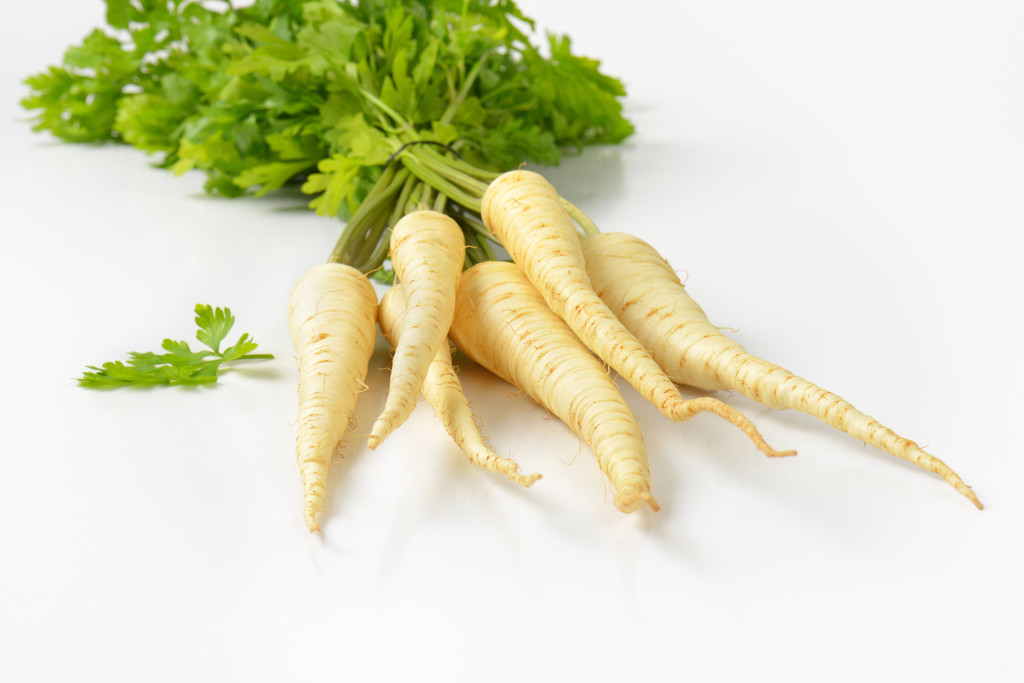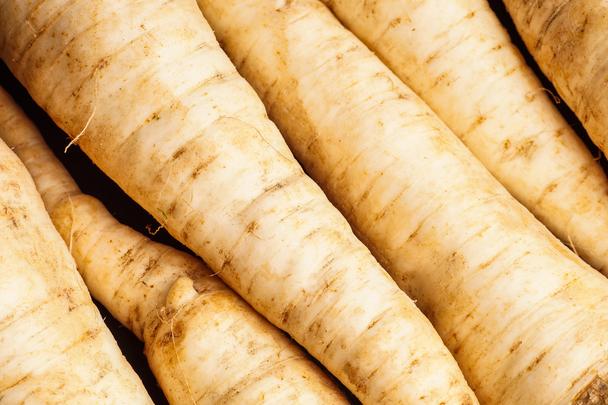The parsley root wrongly leads a culinary shadowy existence. The beet is a regional winter vegetable that can be prepared in many ways and scores with many nutrients.

The parsley root – a regional winter vegetable
The parsley root is an ancient subspecies of parsley that ends in a cone-shaped, pointed root. This whitish root with brown transverse rings has a slightly sweet yet intensely spicy aroma reminiscent of parsley. It is particularly suitable for seasoning soups and vegetable stews, but it is also good on its own on the plate.
Parsley root is a classic winter vegetable: it is in season from late October through February and can be sourced locally. The beet also provides you with valuable nutrients in winter and can be used in many ways.
The parsley root is often confused with the very similar-looking parsnip. Both are white turnips with brownish transverse grooves. But you can tell them apart by their ends: the thick stalk of the parsley root protrudes upwards, while the stalk of the parsnip is slightly curved inwards.
A good turnip: These nutrients are in the parsley root
Parsley roots are not only consumed as food, but are also considered medicinal plants. The beet is full of nutrients. It includes, among other things:
Calcium: ensures healthy bones and teeth.
Iron: is responsible for blood formation.
Vitamin C: strengthens the immune system. With just 200 grams of parsley root we can cover 80% of our daily vitamin C requirement.
Essential oils: not only ensure the spicy-aromatic taste of the vegetables, but are also very healthy. Parsley roots contain, among other things, apiol, also called parsley camphor, which is said to have a diuretic, draining and blood-cleansing effect.
The consumption of parsley roots is therefore definitely recommended in winter if we want to strengthen our immune system. Thanks to the high content of apiol, the parsley root also has the reputation of being an effective home remedy for cystitis, as it has a diuretic effect.

Prepare parsley root tasty
Parsley root is a classic soup vegetable because its intense aroma provides a spicy taste. But parsley root can do much more than play a supporting role in stews. Before you try one of the many variants, the beet should be prepared as follows:
Peel the parsley root with a vegetable peeler
Cut off the ends
Hold the turnip briefly under running water and dry it.
Cut them into cubes, slices or sticks, depending on what you want to use them for.
After that, the parsley root is ready for the preparation of creamy soups and stews, for example, or you can boil it like carrots and then fry it in some organic butter or oil, use it for spreads, or prepare honey-glazed oven vegetables with it.
Other possible uses are:
Parsley root puree: Boil prepared parsley roots and potatoes (in a ratio of about 3:1) with some liquid (half water, half (vegan) organic milk) until cooked. Then add organic butter or a vegan alternative to the vegetables, add salt, pepper, nutmeg or other spices to taste and mash to a puree.
Parsley Root Chips: Thinly slice smaller parsley roots and heat oil in a pan. Add the chips, making sure they aren’t on top of each other. Fry them briefly on high, then reduce the heat to medium. Continue frying the slices, turning them from time to time, until they turn golden and crispy.

